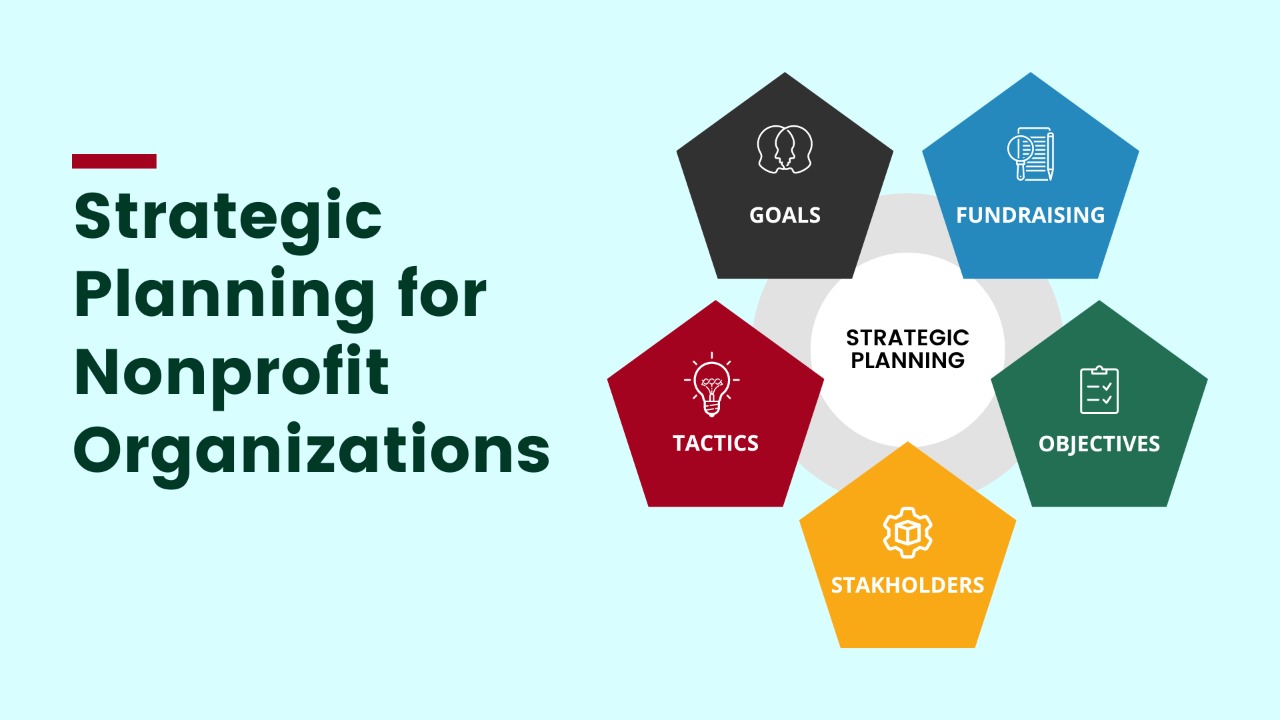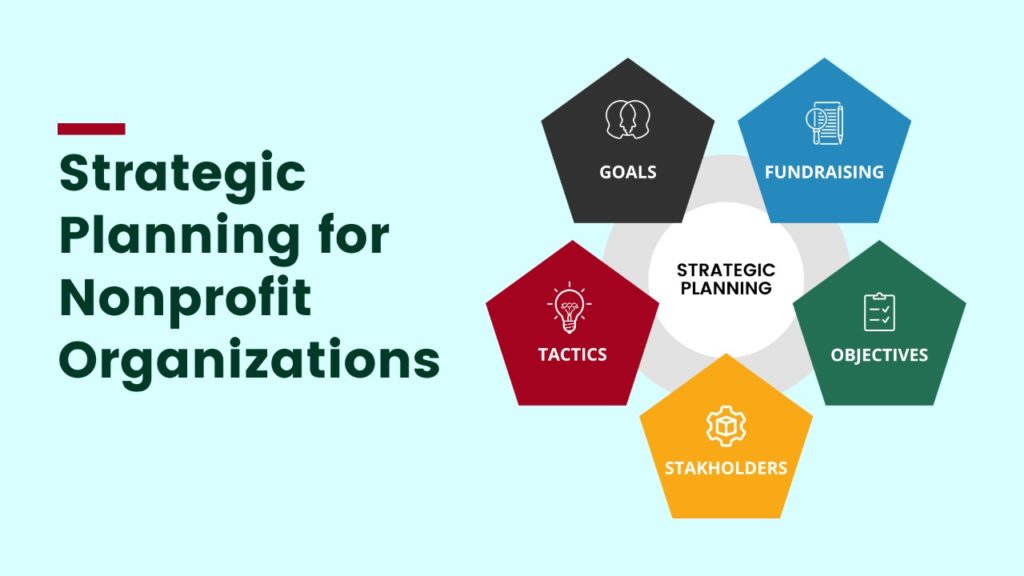
Planning is an important part of a nonprofit’s success. A strategic plan is the foundation of your nonprofit organization and helps you achieve your goals. That is why many organizations have a Strategic Planning for Nonprofit Organizations. This will help them to be more successful in their endeavours.
Strategic Planning is something that every business should think about, but it’s not something that everyone knows how to do. Even the top companies in the world have had to come up with a plan. Sometimes, because of market changes, you need to make sure you can adapt in the best possible manner.

Strategic planning can be a confusing concept for many small businesses. It sounds like a big activity that requires a lot of time and energy. This isn’t usually the case. This blog explores strategic planning in a simple way so that you can get to grips with it quickly and easily.
What is a nonprofit strategic plan?
A nonprofit strategic plan is a roadmap for where the nonprofit wants to be in the future. The nonprofit will follow a set of goals and objectives to reach its long-term goals.
Nonprofit strategic planning is an important activity that all nonprofits need to engage in. you can use many different tools to help you with your strategic planning.
Why is Strategic Planning for Nonprofit Organizations Important?
Nonprofits have no choice but to plan strategically because they depend on outside resources. Funders and investors don’t want to partner with charities that haven’t done their homework. That’s why nonprofit organizations need to plan strategically or risk losing millions of dollars in potential funding. You need to look at the big picture to create an excellent strategic plan. That’s why you need to write a mission statement that states your goals, your mission and how you plan to achieve them.
Different types of nonprofit strategic plans can be used depending on the circumstances and goals. You should choose a strategic planning model based on the circumstances and outcomes of your organization. Let’s discuss how you can build a strategic development plan.
Steps to build your strategic development plan
A strategic plan for your non profit needs to be updated every three to five years to remain challenging and growing.
Establish your development plan’s goals
The first step is to realize that your philanthropic goals are directly tied to your development plan. Any funds you raise through various fundraising ideas are a means to make this philanthropy/programs happen. The money is not the end goal for your organization; an impact on your mission is. Then, break that down into categories for how you’ll raise the money for this program area. Use your organization’s budget to determine what your funding needs to look like to achieve some short-term and ultimately long-term programs that will help implement and fund these ideas.
When starting up an organization, one of the first things that come to mind is what kind of development plan your nonprofit organization should have at its onset. For example, how do you intend to keep donors happy enough so they won’t stop sending in donations?
Consult with key stakeholders
To reach your fundraising goals, you should ask your stakeholders for input rather than just telling your development team how much money you need. When your fundraising amount differs dramatically from last year or when you use strategies that have not been effective, stakeholders will raise concerns.
Identify your Fundraising and Marketing Strategies
To get an idea of what areas you’re already strong in and what could be improved, you should perform a SWOT (strengths, weaknesses, opportunities, threats) analysis of your past fundraising efforts.
Don’t set a higher fundraising goal for your weak areas than for your vital areas. Doing this allows you to try out different strategies to strengthen these elements without feeling so pressured.
Establish SMART Objectives
Your objectives serve as benchmarks to help you reach your mission. SMART fundraising goals are those that are specific, measurable, assignable, realistic and available:
- Specific: focus on a specific area for improvement.
- Measurable: provide a metric or indicator of progress.
- Assignable: assign it to someone.
- Realistic: describe what can realistically be accomplished with the resources at hand.
- Time-based: indicate when you achieve the result(s).
Develop specific tactics to achieve each objective
To ensure your development strategic plan’s overall fundraising goal is reached, your organization needs to employ special reporting and support tactics.
For achieving these goals, assign each team member a job. To achieve these goals, assign each team member a job.
If everyone understands their role within the organization and how their actions impact the mission, everything will get done. Also, everyone can act as a team member and accomplish goals through a clear sense of direction.
Don’t forget that sometimes the best solution is to automate tasks to free up more staff time and reprioritize their activities. Invest in new software if you manually send out your monthly newsletter or manage every social media post.
Conclusion
There’s a lot that goes into Strategic Planning for Nonprofit Organizations. Creating a solid plan that will help you meet your goals and get your message across to the people who need to hear it is essential. Also, it can help the organization be more effective in fundraising, marketing, and finding the right people for the right jobs.
